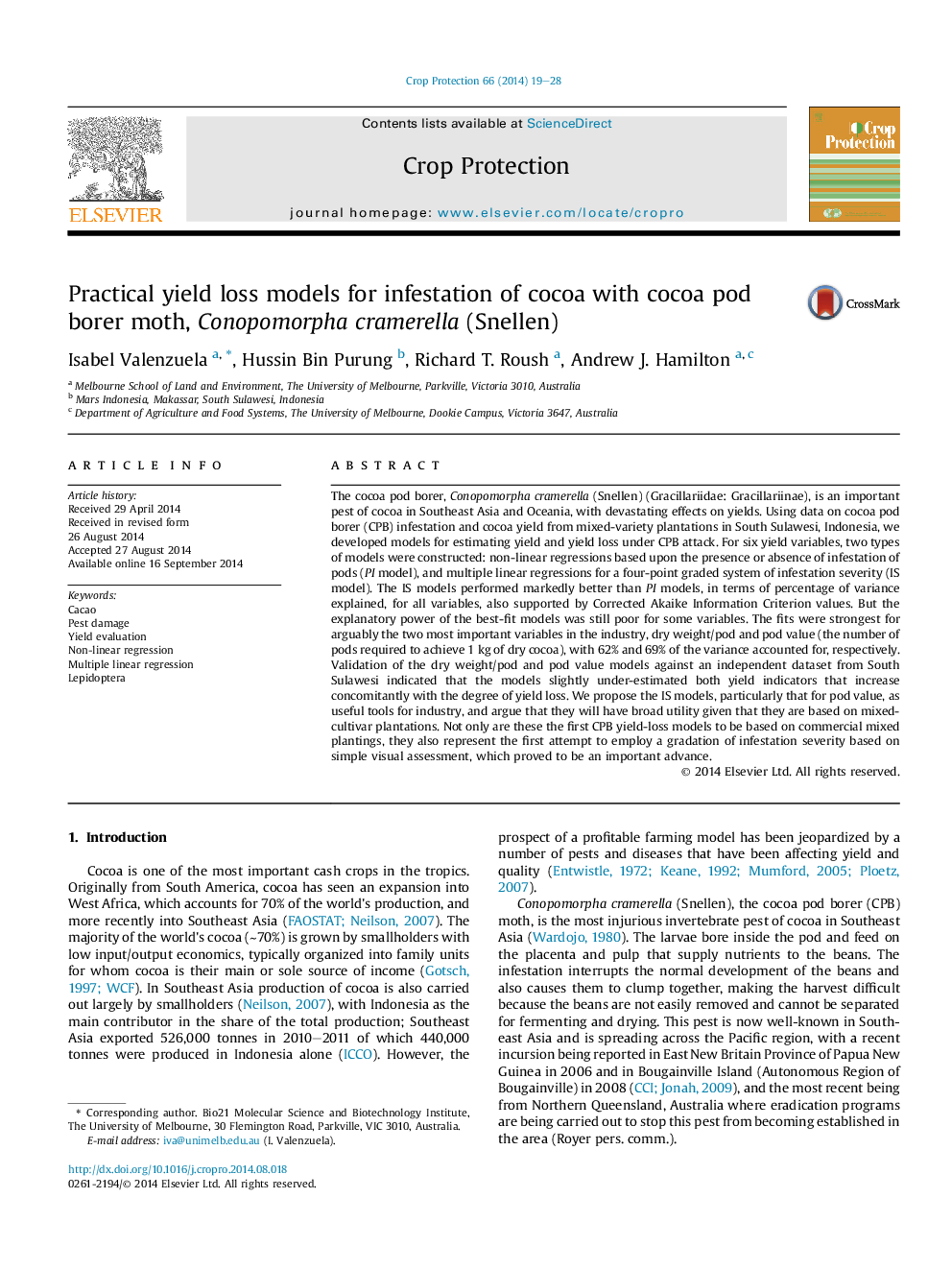| کد مقاله | کد نشریه | سال انتشار | مقاله انگلیسی | نسخه تمام متن |
|---|---|---|---|---|
| 6373691 | 1624321 | 2014 | 10 صفحه PDF | دانلود رایگان |

- Yield variation of cocoa was assessed due to CPB in South East Asia.
- Non-linear and multiple linear regression models were tested for assessing yield effects.
- Multiple linear regression models were more accurate in predicting yield than non-linear regression models.
- South Sulawesi has now two models to predict yield and yield loss of cocoa due to CPB.
The cocoa pod borer, Conopomorpha cramerella (Snellen) (Gracillariidae: Gracillariinae), is an important pest of cocoa in Southeast Asia and Oceania, with devastating effects on yields. Using data on cocoa pod borer (CPB) infestation and cocoa yield from mixed-variety plantations in South Sulawesi, Indonesia, we developed models for estimating yield and yield loss under CPB attack. For six yield variables, two types of models were constructed: non-linear regressions based upon the presence or absence of infestation of pods (PI model), and multiple linear regressions for a four-point graded system of infestation severity (IS model). The IS models performed markedly better than PI models, in terms of percentage of variance explained, for all variables, also supported by Corrected Akaike Information Criterion values. But the explanatory power of the best-fit models was still poor for some variables. The fits were strongest for arguably the two most important variables in the industry, dry weight/pod and pod value (the number of pods required to achieve 1Â kg of dry cocoa), with 62% and 69% of the variance accounted for, respectively. Validation of the dry weight/pod and pod value models against an independent dataset from South Sulawesi indicated that the models slightly under-estimated both yield indicators that increase concomitantly with the degree of yield loss. We propose the IS models, particularly that for pod value, as useful tools for industry, and argue that they will have broad utility given that they are based on mixed-cultivar plantations. Not only are these the first CPB yield-loss models to be based on commercial mixed plantings, they also represent the first attempt to employ a gradation of infestation severity based on simple visual assessment, which proved to be an important advance.
Journal: Crop Protection - Volume 66, December 2014, Pages 19-28